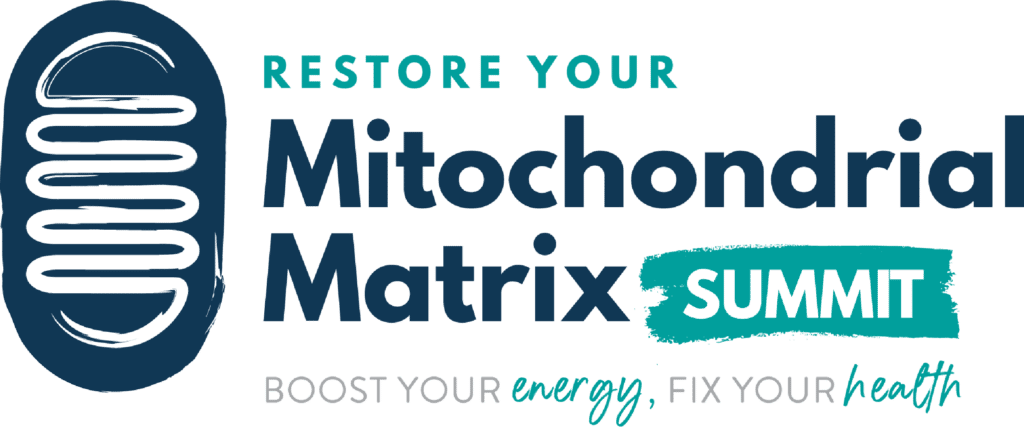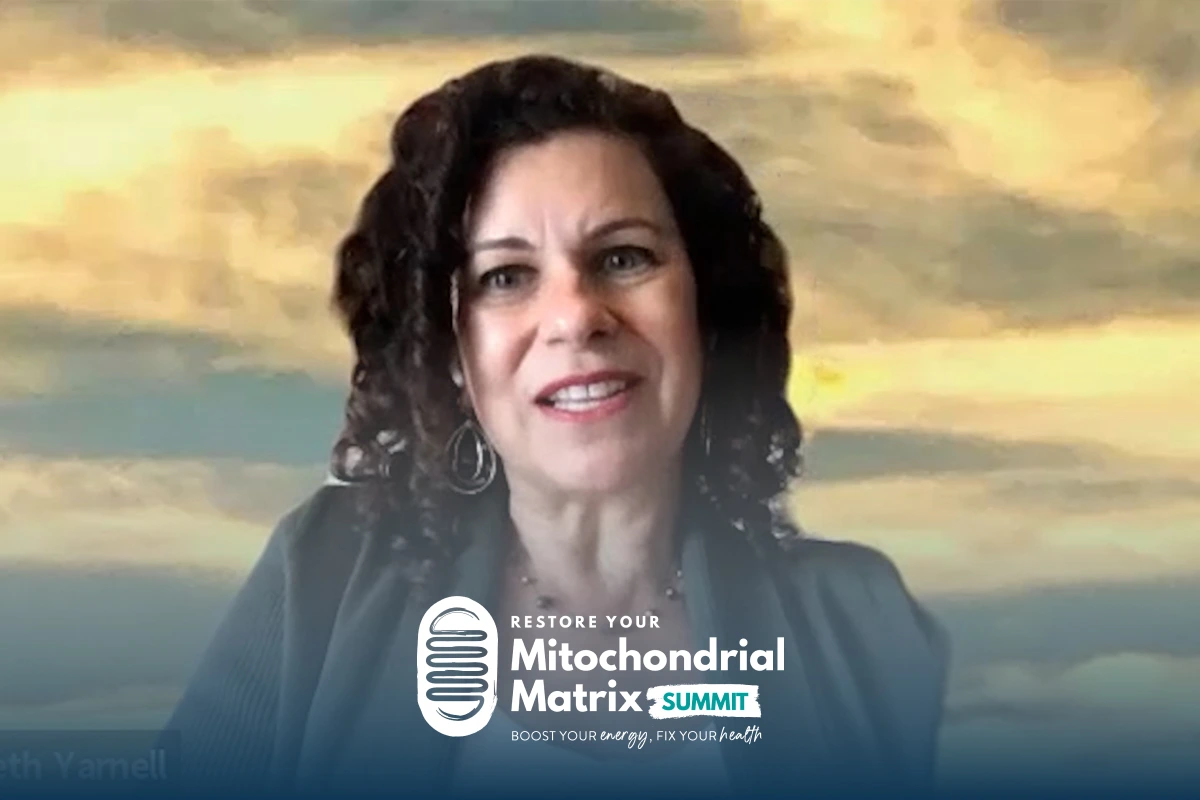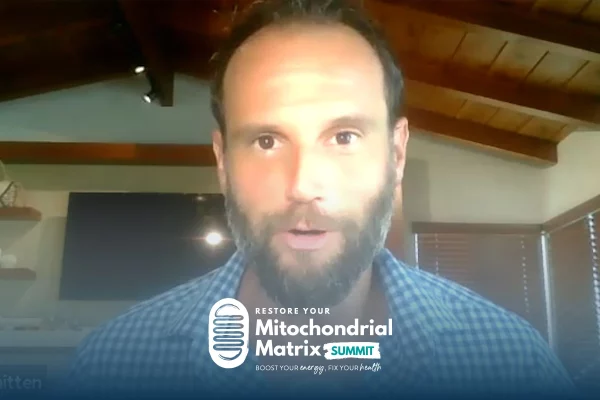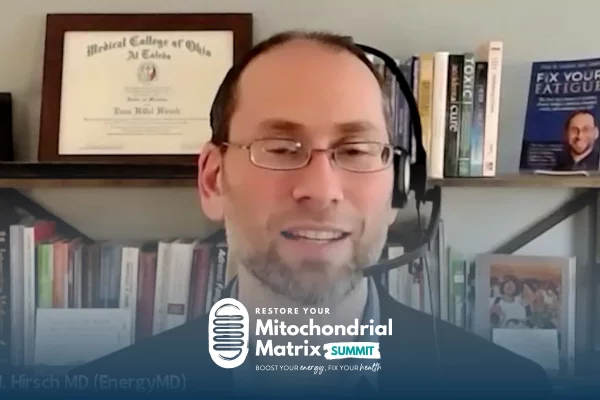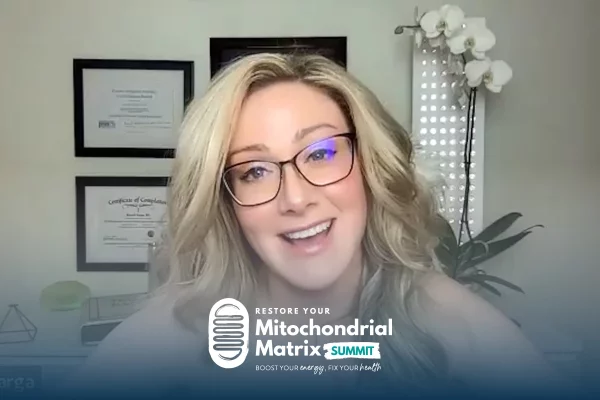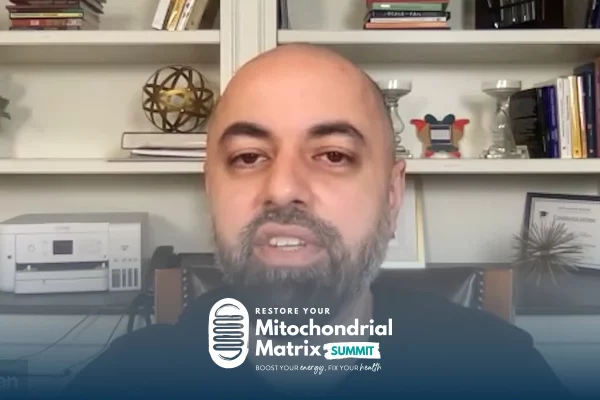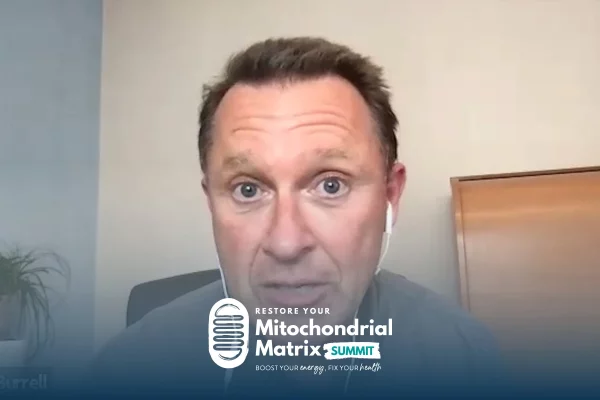Join the discussion below
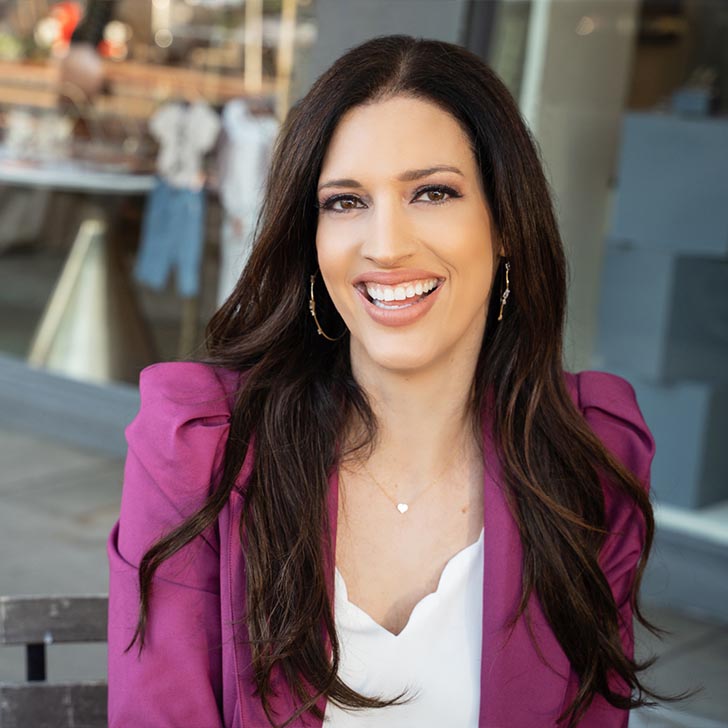
Laura Frontiero, FNP-BC, has served thousands of patients as a Nurse Practitioner over the last 22 years. Her work in the health industry marries both traditional and functional medicine. Laura’s wellness programs help her high-performing clients boost energy, renew mental focus, feel great in their bodies, and be productive again.... Read More
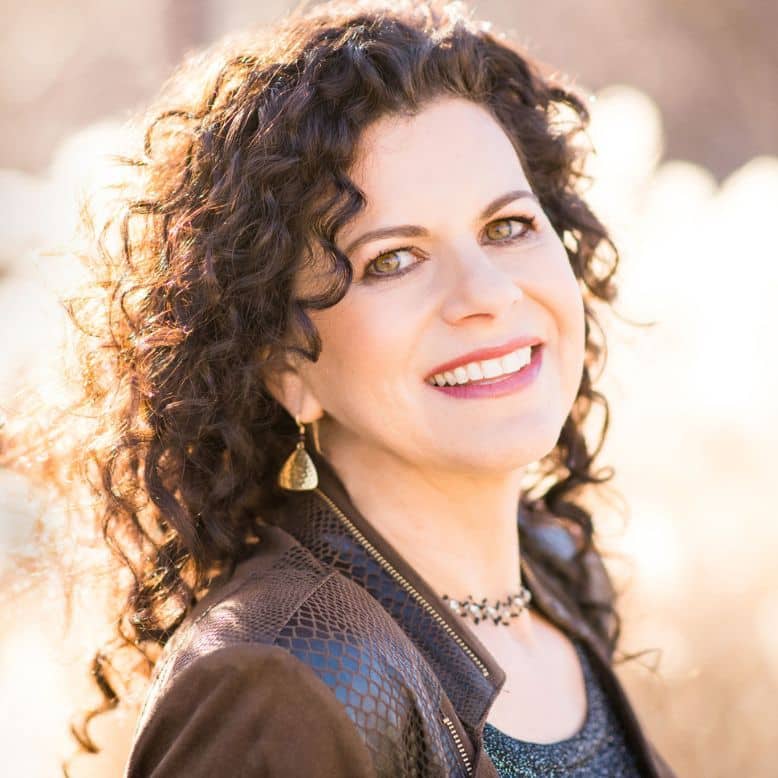
Since being diagnosed with multiple sclerosis in 1999, Elizabeth Yarnell has been on a mission to redefine MS and autoimmunity naturally as a traditional naturopath and Certified LEAP Therapist. She’s worked with hundreds of MS and other autoimmune sufferers in her nationwide clinic using unique, personalized natural therapies to empower... Read More
- How to know if you have hidden inflammation
- How inflammation affects cellular functions
- 3 keys to releasing inflammation and boosting your energy
Related Topics
Acid Reflux, Arthritis, Asthma, Autoimmune Disease, Autoimmunity, Bloating, Blood Pressure, Brain Fog, Cellular Energy, Chronic Inflammation, Constipation, Diarrhea, Fatigue, Fibromyalgia, Headaches, Hidden Inflammation, Inflammation, Inflammatory Triggers, Mitochondria, Mitochondrial Function, Multiple Sclerosis, Nervous System, Nutrition, Optic Neuritis, Sinusitis, Stomach Cramping, ToxinsLaura Frontiero, FNP-BC
Welcome back to the restore your mitochondria discussion. I’m your host, Laura Frontiero, and I’m bringing you experts to help you boost your energy and fix your health so you can build the life you love. Today, my special guest is Elizabeth Yarnell. Hi, Elizabeth. Welcome to the summit.
Elizabeth Yarnell
Hi Laura, thanks for having me.
Laura Frontiero, FNP-BC
I’m so glad to have you here. I wanted to bring you on to have a really good discussion about inflammation today. I wanna really dig into that. I know people all the time tell me, I know I have inflammation in my body. I feel like I’m suffering from chronic inflammation and I can’t get rid of it. So we’re gonna go into a deep dive about that today. Your total authority on this topic, you have a personal story as well. You were diagnosed with multiple sclerosis in 1999, and you’ve been on a mission to redefine MS and autoimmunity naturally. You’re a traditional naturopath and a certified leap therapist. You’ve worked with hundreds of MS and other autoimmune suffer, excuse me, autoimmune sufferers. And you’re a TEDx speaker, an award-winning author, and you have a cookbook that sold more than 70,000 copies. You’re a patented inventor. You’ve been featured on CBS, NBC, ABC, PBS, Good housekeeping health, Martha Stewart, Living Radio, pretty much everywhere. So glad to have you on here. Tell us a little bit about your personal story, because I’m sure that your expertise in inflammation has something to do with your own journey.
Elizabeth Yarnell
It is. Inflammation is definitely my jam, but every time I hear that introduction, I’m reminded that it wasn’t always like this. Like all of those things have come out of my inflammation journey. And in fact, it was a really cold winters night in January of 1999. When I went to sleep as usual, I had been working on an article for a newspaper and decided I was ready to print it out as a draft. And I printed it out and read it over as I was brushing my teeth and I noticed there were three spots in there. I wanted to change, but I figured I was tired. I’d go to sleep, do it in the morning. But when I woke up in the morning and I set my, the pages of my draft down next to my coffee, I couldn’t even read them. It was like somebody had taken an eraser and erased words, phrases, entire paragraphs, lines, chunks of text. They were completely gone and even worse, I couldn’t even really understand, what it was I was reading.
It was all kind of confusing and I couldn’t figure out those edits I had wanted to make at all. So I called up my father who’s a neurologist. And he sent me into an eye doctor because I said, there’s something wrong with my eyes. And the eye doctor diagnosed me with optic neuritis, which is inflammation of the optic nerve and sent me in to get an MRI, which came back with the diagnosis of Multiple Sclerosis. At that time, I didn’t even know what MS was, but what I learned very quickly was that 80% of MS patients experienced significant disability within 10 years of diagnosis. So here I was literally two weeks before my 30th birthday. And I was learning that I might be in a wheelchair by my 40th birthday because MS is an inflammatory, autoimmune, degenerative disease that attacks the nervous system and inhibits nerve synapses or nervous system communication.
Laura Frontiero, FNP-BC
Wow, that is quite a story. And I know there’s people listening right now who have experienced something similar or know a loved one who has. MS is that crazy disease that manifests differently in every single person. Tell us more about this. So you realized you had MS. You realized you didn’t wanna be in a wheelchair by the time you were 40. So what’d you do about it?
Elizabeth Yarnell
So my doctors, the only things they could offer me were a selection of injectable, very, very toxic medications with, or pharmaceuticals I should say, with super serious side effects, some of them total systems shut down. And even with the medications, the efficacy rates were so, so low, like 20%, 30%. And they weren’t, there was no real proof that they would slow or stop the disease. And in fact, all the doctors will tell you, MS incurable. And that was the most depressing thing I had ever thought, I’d ever heard, because here they were telling me there was nothing I could do to change the course of my future. But meanwhile, my entire world was about reading and writing. And if I couldn’t read and I couldn’t write, I was gonna have to find a whole new career. I didn’t know how I was gonna support myself, how I was going to make it through. I even had to approach my new fiance and offer him an out because this wasn’t a future he had signed up for, but it was my fiance at the time who first suggested to me that maybe the state of my body might have something to do with what I was eating. And I had to admit, maybe had a point because really for the entire decade of my twenties, I lived alone. I either ate out or I ate fast food, or I simply skipped a meal. And the only staples I kept in my apartment were Diet Coke, crystal light and gummy bears.
Laura Frontiero, FNP-BC
Oh, my. You possibly ate yourself into this or malnourished.
Elizabeth Yarnell
Yes.
Laura Frontiero, FNP-BC
Into it yeah.
Elizabeth Yarnell
I think I ate myself into it because the more research and the more I’ve learned about auto immunity and Multiple Sclerosis, the more I really feel that the entire word autoimmune is an oxymoron. Because if we break it apart, it means auto, self, immune, allergic, allergic to self. Well, evolution would say, nay, that’s not possible. You would’ve died out. Your whole line, would’ve died out a long time ago. So really what I think autoimmunity is and Multiple Sclerosis, all of autoimmunity or any chronic conditions, are due to inflammation that is being triggered by things that doctors haven’t been looking for. And if we just look in the right places, we can identify those triggers, because unlike what conventional medicine thinks that that auto immunity has an unknown ideology, that we don’t know why it happens. And therefore we can’t cure it. I actually really think there’s always a trigger and we can always discover what’s happening and how to live without those triggers. Just like celiac patients when they figure out that gluten is their problem.
Laura Frontiero, FNP-BC
Right, which is an autoimmune disorder. So clearly you figured it out because you’re here today on this summit not on a wheelchair, thriving. I know you personally, I’ve hung out with you. I happen to know that you are healthy and vibrant and acting like any normal person so.
Elizabeth Yarnell
I think we’ve even danced together, right?
Laura Frontiero, FNP-BC
I think so, I think so. Yes, so let’s, so this is your story of what you experienced, but what you experienced in terms of inflammation, can really be, it’s a broader topic than this. So we’re not talking just MS and autoimmunity, inflammation at the cellular level causes all kinds of health problems, everything from cancer to heart disease, diabetes, you name it. Inflammation is at the root of it. So let’s shift from the MS side of things and talk about inflammation in a broad way. How would you know if your body is inflamed?
Elizabeth Yarnell
I love this. I actually just gave a talk on this last week in New York City. So I like to say, we’re talking about hidden inflammation, not the kind of inflammation you might see when your ankle swells up, when you twist it, that’s visible inflammation. That’s the good kind of inflammation, it’s there to help the body heal. But the key to remember is that, healing can only happen in the absence of inflammation. So like with my ankle, when I twisted it, the swelling went down and that inflammation receded, so that the body could heal itself. So in our body, we have hidden inflammation. So if we have hidden inflammation in our head, it could look like migraines or headaches or brain fog or forgetfulness. If we have hidden inflammation in our sinuses, that could be chronic sinusitis. So anything with an itis, as you know, as a doctor, means inflamed, right?
Appendicitis, anything with an itis means inflammation. If we have inflammation in our chest area, that could be blood pressure issues. That could be asthma. That could be heart issues. If we have inflammation in our gut, that could look like acid reflux, it could look like bloating. It could like look like stomach cramping when you eat. If we have inflammation in our bowels, that could be anything from diarrhea, to constipation or both, alternating with each other. Inflammation in our joints could be arthritis or fibromyalgia. Really inflammation is all. If you remember that all symptoms pretty much more or less, are based in inflammation. And if you are experiencing anything negative in your body, that’s probably not a healthy, normal pain free existence, that’s probably due to inflammation.
Laura Frontiero, FNP-BC
Wow, it sounds like it is such a broad problem. And it’s at the crux of mitochondria.
Elizabeth Yarnell
But the mental. Yes.
Laura Frontiero, FNP-BC
Yeah. So we’re on the mitochondria summit. We’re talking about cellular energy and that being the most foundational thing you can do is support your cellular health to heal and inflammation just wipes out your mitochondria, right?
Elizabeth Yarnell
Right, so if you have, if you are inflamed, your body is working double time to maintain that state of inflammation. And that takes a ton of energy, which is why people get exhausted and fatigue can be a hallmark of chronic inflammation because your body is working so hard to maintain that inflamed state. And that impacts even down to the cellular level, how those mitochondria are able to pick up what they need to do and do all of their functioning and send that out to the rest of our cells because that inflammation gets in the way.
Laura Frontiero, FNP-BC
Yeah, so what you’re saying is with inflammation, your body’s working double time just to maintain normal functioning in the presence of inflammation. It’s double the work.
Elizabeth Yarnell
Yes.
Laura Frontiero, FNP-BC
Okay, so how is inflammation then affecting your energy levels? So we know that we have this mitochondrial ATP production at the cellular level, and we know inflammation is making your body work double time is that’s what’s causing a lowering in energy?
Elizabeth Yarnell
So I am not a medical doctor or a scientist in that way, but I would expect that if you were to look at your cells under the microscope when they were inflamed, you would notice that they’re actually larger in size. And in fact, did you know that obesity is being considered excessive inflammation? So oftentimes it’s the inflammation in the body that’s even causing us to look bigger. And when people go through an anti-inflammatory program, they literally deflate and they shrink down and they lose like girth around their shoulders everywhere. Their entire body starts to just kind of, deflate is the best word I know, just kinds of stops being so puffy. And so if we think about our body, when we’re inflamed being really puffy and often you can even see it in people’s faces or in their necks, when you’re looking, or your rings don’t fit, little clues that your body’s inflamed. You might see it in your ankles or your shoes are tight, or your belt is tight. All those things are inflammation. And the same thing is happening at the cellular level. If you can like think about a cell, an individual cell, maybe with a belt around it, and they have to loosen up those belt notches when you’re inflamed to let that cell, ’cause the whole cell expands with the inflammation because of the whole immune response in the body.
Laura Frontiero, FNP-BC
And this just zaps our energy, just, yeah.
Elizabeth Yarnell
So exhausting, and fatigue is a hallmark, as I said of Multiple sclerosis, of really any chronic immune issue. And even if you haven’t been diagnosed with something, but you are just exhausted all the time, there’s a good chance that inflammation is playing a role.
Laura Frontiero, FNP-BC
So what’s causing the inflammation, let’s get into that. And this is gonna be really helpful. So audience, make sure you have your pen and paper going because we’re gonna probably go through a list of all the things that are causing. ‘Cause it’s not just one thing. So I have a feeling Elizabeth, that you’re about to hit us with a list.
Elizabeth Yarnell
Well, so what I’m not going to do is I’m not going to hit you with a list of specific foods that you should, super foods or anything like that. Because just like we were talking about with Multiple sclerosis, inflammation is really a snowflake issue because every person’s body has a different history of environment and foods that you’ve eaten and what you’ve been exposed to. And really it all comes down to what I consider our immune system bucket. So if you, if we think of our immune system, like a bucket where everything that goes into our daily lives that has to be dealt with and processed by our body, goes into the bucket, all of the insults and assaults, whether that’s lack of sleep or stress or maybe alcohol or over the counter pain killers or antibiotics or other pharmaceuticals or parasites or mold, any of those things, they all go into our immune system bucket and they have to be processed out. But when the bucket gets too full, then it starts to spill out over the top. And that’s when you tip over into chronic inflammation.
So I think that the best ways to start your journey into reducing inflammation in your body is to avoid certain things that we can be fairly confident are causes of inflammation in the general population. And I’m gonna be very specific to America or North America because of our highly processed diet. So the things I like to suggest that people start to avoid in their diets to reduce inflammation are artificial sugars. So that could be aspartame, high fructose corn syrup, saccharin, there’s all kinds of dextro sucrose maltodextrin. Those are all synthetic artificially created laboratory created sweeteners and they all can trigger inflammation in a body. In fact, there’s a syndrome called aspartame poisoning. If you eat a lot of aspartame, if you drink a lot of sodas or chew a lot of gum or really eat a lot of the foods in our daily world, you’re gonna be exposed to way more artificial sweeteners than you might be aware of. And nobody is out there monitoring how much we’re each taking in. So artificial sweeteners are a big one. Artificial colors are another one. So they might have names on the labels of foods. Or they might just say FD&C food dye color with a number. But when they were first brought before the FDA in the 1930s, they were sourced from coal. Now artificial colors are sourced from petroleum and they’ve really never been tested for sensitivity and the human body, especially in the amounts that we are taking it.
Laura Frontiero, FNP-BC
That’s scary, that’s scary.
Elizabeth Yarnell
Isn’t that scary?
Laura Frontiero, FNP-BC
Artificial color or food coloring. you’re saying artificial coloring or food coloring.
Elizabeth Yarnell
Yeah, food coloring.
Laura Frontiero, FNP-BC
Is initially from coal and now from petroleum?
Elizabeth Yarnell
Yes.
Laura Frontiero, FNP-BC
Yeah, I mean, think about this everyone. This is what we’re feeding our kids. This is what we’re feeding our, elderly parents in an assisted living. This is what we’re putting in our own bodies mindlessly. This is terrifying.
Elizabeth Yarnell
And it’s not only in our foods, those artificial colors. If you think about like, even like a Sudafed is red or Tylenol capsule has that red T on it. They are in our makeup. They’re in our personal care products. They’re in our sunscreen, they’re in our hair products. They’re in our laundry detergent. They’re in our dish washing liquid.
Laura Frontiero, FNP-BC
How about that red toothpaste?
Elizabeth Yarnell
Oh yes, that one has saccharin too. That one is full of lots of chemicals, but you’re, exactly. Why would we wanna brush our teeth, put red food dye when we’re trying to clean our teeth? None of it makes much sense. So, and then that third one and then, and I’m only gonna give our listeners today three because it can get overwhelming, but this one is a big one and it’s in so many things and it’s called “natural flavors.” And you might think they’re natural. And you look at that can of sparkling water. And you’re like, wow, this stuff is great. It has no calories. It has no sweeteners. It just has natural flavors. But what you don’t know is that natural flavors can encompass a whole universe of chemicals, including MSG, all sorts of chemicals that they don’t have to disclose and just get wrapped up into this one, this one FDA loophole that they can call natural flavors.
Laura Frontiero, FNP-BC
And natural flavors is one of the nastiest lies out there. In fact, I’ve had, discussions with loved ones and clients about the dangers of this. And people get really frustrated because they think they’re doing something really healthy. And then I’m coming in and saying, well, it’s actually not as healthy as you think it is. Better for you to just make your own carbonated water or just get unflavored and squeeze some fresh lemon or lime or muddles some strawberries or mint or something, and put that in there if you want the flavor.
Elizabeth Yarnell
Exactly. And really these natural flavors can come in so many different chemical stews. For me, my body is so sensitive to natural flavors that when I accidentally have any, usually I can taste them when I’m starting. So I stop, but if I drink them or I eat them, then literally my eyebrows start to peel. And first it feels like there’s sand in my eyebrows because it’s peeling. And then it stretches down to my eyelids and they peel and then they start to bleed.
Laura Frontiero, FNP-BC
Oh my gosh, that is a huge response. And what’s coming to mind too, is some of the things people don’t realize bullions and flavorings to put in soups. When you said a stew of chemicals, my mind went to flavoring food and using a lot of those bullions are just artificial or natural flavoring, which is really code for artificial flavoring.
Elizabeth Yarnell
And even in we think, oh, we’re gonna go non-dairy, get some almond milk or something, coconut milk. Well, if you look at the labels on those packages and they’re getting worse and worse every day, they have all sorts of flavors and sweeteners added to it and chemicals, chemical preservatives like benzoates and phosphates. And a lot of people are very sensitive to those too.
Laura Frontiero, FNP-BC
Yes, and I will say just a quick tip for all of our listeners who are thinking, oh my gosh, and this goes with oat milk too. So if you’re a nut milk or an oat milk lover, I have the most amazing contraption for you. It’s called an almond cow. Are you familiar with this, Elizabeth?
Elizabeth Yarnell
I am not, tell me.
Laura Frontiero, FNP-BC
Okay, this is the most amazing thing. I want you to go look it up after almond cow, you make your own nut milks. It takes about 30 seconds for it to make your milk. It’s a contraption that completely pulverizes and grinds and whizzes the nuts up as the water is, purified water is swishing around it and it keeps all the pulp contained. So you don’t have to strain it. You don’t have to do anything exciting. What I do with it, the only extra step I take and you don’t have to, but I do is I soak my nuts overnight so that they’re more digestible. So I will plan like, okay, I’m gonna make almond milk tomorrow. I’ll put my almonds out on the counter, soak ’em in purified water, rinse them, and then make the almond milk. And I’ll throw in a date for sweetness. So if you want a little bit of sweetness in your milk, I’ll put a pitted date. And I put in a pinch of sea salt because it just balances. And that’s it. Now there’s no preservatives. There’s nothing weird in it. So you have to drink it. It will go bad because it’s not shelf stable, even in your refrigerator. You gotta drink it within a couple of days, but it’s delicious.
Elizabeth Yarnell
I love that. I love contractions like that.
Laura Frontiero, FNP-BC
It’s amazing.
Elizabeth Yarnell
I’m gonna definitely check that one out. I’m gonna find it on Amazon.
Laura Frontiero, FNP-BC
You’ll love it. You’ll love, go to almond cow website. Don’t support Amazon. They’re part of the problem.
Elizabeth Yarnell
Go to the almond cow source and get it from them.
Laura Frontiero, FNP-BC
Okay.
Elizabeth Yarnell
I will do, for sure.
Laura Frontiero, FNP-BC
Yeah, I know we, we, we love Amazon, but this is a company you wanna support. They’re doing a good thing. Yeah.
Elizabeth Yarnell
Cool.
Laura Frontiero, FNP-BC
Okay, so we talked a lot about the things that are causing inflammation here and it goes hand in hand with how to reduce inflammation. So if natural flavoring causes inflammation, then eat real food is the polar opposite, right? So any other tips you wanna give on reducing inflammation in the body?
Elizabeth Yarnell
Yes, so whole foods are better than processed foods. That’s one of my main models. You’ll see that all over. All of my properties. Whole foods are better than processed foods. And that’s actually what led me to invent and patent my cooking method that I introduced in my cookbook, “Glorious One Pop Meals.” Didn’t mean to make this a little promo of this, but this is it. I created this cooking method to make it so super easy to prepare dinners out of whole foods in less than an hour and have them ready on the table. So whole foods are better than processed foods. Eat a rainbow of foods so that you can get a variety of nutrients is a really good way.
A lot of people are deficient in a lot of nutrients, especially minerals and minerals are the foundation of life. So you wanna be sure that you are getting a lot of phytonutrients and other nutrients in your foods or supplementing them if you need to. And then I think that’s the biggest thing. Don’t fall for any of the fat diets. Don’t don’t think you need to go keto or paleo or vegan or whatever it is that’s calling to you, unless that makes you feel better. Some people you, I use very sophisticated food sensitivity testing to tell me exactly what’s causing the inflammation in people. And it never comes out that matches any one of those fat diets so.
Laura Frontiero, FNP-BC
That’s so true, that’s so true.
Elizabeth Yarnell
It’s like, what do you mean? I’m sensitive to avocados, how am I gonna be keto now, right? So, yeah. And you know, keto, in my opinion, is good to jumpstart the body to shift things. I don’t believe people should be on a hard keto diet for long periods of time. It causes some problems. So yeah, totally with you there. So, I mean, I’m gonna, I’m gonna ask what is this cooking contraption you have and we’re talking about almond cow. We need to talk about your thing, what is this? I dunno about this.
Laura Frontiero, FNP-BC
So it’s not a contraption. I use a cast iron Dutch oven to layer foods in in a specific order. That’s what I have the patent on. And it’s all whole foods. So you start with, you make an entire complete meal, but you make it the way you wanna make it. So you put in carbs and then protein and flavorings and safe oil for you. Everything is safe for you because you are making it yourself. And then literally you flash cook it at super high heat. 450 degrees for 45 minutes.
Elizabeth Yarnell
Oh wow, amazing. You do it in the oven or stovetop? How does this happen?
Laura Frontiero, FNP-BC
In the oven.
Elizabeth Yarnell
And this is your method. You’ve patented the method.
Laura Frontiero, FNP-BC
Yes.
Elizabeth Yarnell
So cool, I foresee in your future, there should be a line of cookware that goes with this method. I’m just like.
Laura Frontiero, FNP-BC
Oh, let me tell you. That’s been a long journey.
Elizabeth Yarnell
We’ll talk more later. I didn’t know this about you. This is super fun. Okay, so we talked about reducing inflammation with food. What else you got?
Laura Frontiero, FNP-BC
So yeah, inflammation, you can also reduce inflammation by detoxing your body. So easy ways to do that might be an infrared sauna, or even an epsom salt bath. I love ionic foot baths. They kind of get a bad rap, but I think they’re amazing detox systems. So that can really help reduce that load in your immune system bucket. And all of that will help you become less reactive to foods that you’re eating and other things that are coming into contact with your body.
Elizabeth Yarnell
Amazing.
Laura Frontiero, FNP-BC
And we’re lots of experts on this summit talking about all the healthy things you can do. I would throw into that healthy lifestyle. I would throw get your sleep, reduce stress. We have lots of people talking about that here. People talking about moving your body, drinking purified water, all the good things. It all goes together. But at the end of the day, food is so huge. I mean, we have to eat every, every day unless you’re doing a long fast, but you know what I mean? Pretty much all of us have to eat every day. That’s a non-negotiable. We have to drink water every day. That’s a non-negotiable. We have to breathe every day. That’s a non-negotiable. And so those are the things we really wanna clean up toxins coming in. Don’t eat, breathe toxins, right Elizabeth?
Elizabeth Yarnell
Exactly.
Laura Frontiero, FNP-BC
Yeah.
Elizabeth Yarnell
Exactly. Filter your water, all of that stuff.
Laura Frontiero, FNP-BC
So any final words you’d like to share with our audience before we wrap up today, this has been great.
Elizabeth Yarnell
Yes, so if people are interested, they can find their inflammation score. I have an inflammation quiz.
Laura Frontiero, FNP-BC
Amazing.
Elizabeth Yarnell
Inflammationinvestigator.com, and they can see how inflamed are they and is their body inflamed enough that they’re ready to take some steps to move forward and reduce that inflammation because it is not as easy as just snapping your fingers. You actually have to put in some effort, but if you know what it is you’re doing, it’s much easier.
Laura Frontiero, FNP-BC
Oh, so good, so good. Thank you for sharing your wisdom today, Elizabeth.
Elizabeth Yarnell
Thank you, Laura.
Laura Frontiero, FNP-BC
Take good care now.
Elizabeth Yarnell
You too.
Laura Frontiero, FNP-BC
Bye.
Downloads
